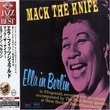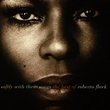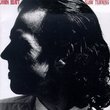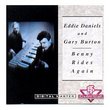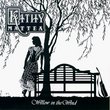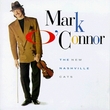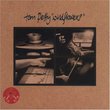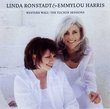| All Artists: Kunzel, Cincinnati Pops Title: Big Band Hit Parade Members Wishing: 0 Total Copies: 4 Label: Telarc Original Release Date: 10/21/1988 Re-Release Date: 10/25/1990 Genres: Jazz, Special Interest, Pop, Classical Styles: Cool Jazz, Swing Jazz, Bebop, Easy Listening, By Decade, 1980s Number of Discs: 1 SwapaCD Credits: 1 UPCs: 089408017728, 089408017711 |
Search - Kunzel, Cincinnati Pops :: Big Band Hit Parade
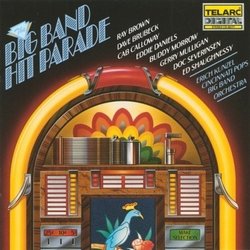 | Kunzel, Cincinnati Pops Big Band Hit Parade Genres: Jazz, Special Interest, Pop, Classical
![header=[] body=[This CD is available to be requested as disc only.]](/images/attributes/disc.png?v=a4e11020) ![header=[] body=[This CD is available to be requested with the disc and back insert.]](/images/attributes/disc_back.png?v=a4e11020) ![header=[] body=[This CD is available to be requested with the disc and front insert.]](/images/attributes/disc_front.png?v=a4e11020) ![header=[] body=[This CD is available to be requested with the disc, front and back inserts.]](/images/attributes/disc_front_back.png?v=a4e11020) |
Larger Image |
CD DetailsSimilar CDs
Similarly Requested CDs
|
CD ReviewsGreat Tribute to Big Band Greats! loungelizard7 | 05/08/2000 (5 out of 5 stars) "I love this CD! I didn't know all of the songs before I heard them here, but I came to like most of them. I thought it was a shame that the opening riff of the great Glenn Miller's (my favorite bandleader) "In the Mood" wasn't played by saxes, but I liked this mostly faithful version anyway, especially how they jazzed up the tune near the end. My favorite pianist, Dave Brubeck, does the standard excellent solo on Ellington and Strayhorn's "Take the A-Train." I loved the gently ambling introduction to the warm "Sentimental Journey," although I didn't particularly like the version of Basie's "One O'Clock Jump." But that's to be expected; I always preferred Benny Goodman's superb arrangement over Basie's anyway. Ellington's "Caravan" gets a rousing Far-East treatment with a rhythm you can't help drum along with, plus nice trombone work and Gerry Mulligan on baritone sax. And Doc Severensen taking Harry James' place on "You Made Me Love You" melts ones very heart.My personal favorite on the CD is the superlative Eddie Daniels on clarinet (my favorite instument). Everyone involved, including Daniels, shines on Benny Goodman's "Sing, Sing, Sing," swinging their way through a slam-bang arrangement of one of the Swing-era's greatest songs, complete with Daniels taking Goodman's solo as well as an extended solo over a great extended drum solo, continuing over the band, slowly vamping back into play, and then running between low and very high notes at the climax of the song. Daniels also does a neat job on Goodman's "Let's Dance." Perhaps my favorite tune on the disc, the opening makes a throwback to the 1820's waltz the song was rearranged from, "Invitation to Dance." It starts off in waltz time, with Daniels playing the tune with no accompaniment. Then, on a fluttering note, the full orchestra sweeps in, quietly at first, then gaining volume. Daniels then plays around them, and as they one-two-three into a few high notes, the brass bursts out with a few notes, answered by a few clarinet tones. This is when the saxes quietly and sweetly begin to play the tune the way Goodman's boys play it, and before we know it, the song has exploded into a big-band piece. This is definitely the most clever arrangement of all of these, and deserves kudos. Daniels also does a fine job on a dreamy, almost fantasy-like arrangement of Miller's "Moonlight Serenade." Opening with slow chimes, strings repeating a dream-like phrase, and a xylophone playing a few notes to complete the effect, lush violins soon swirl in to take over the melody. Daniels does an indescribably beautiful job with the clarinet solo, then continues it over the reprise over the melody by the violins, even at one point qutoing from Goodman's "Don't Be That Way" (see if you can catch it!). I believe this is the shortest track, but it most certainly leaves its mark. This offering is filled with wonderful (and faithful!) arrangements of already great songs, and this is a must-have for any big-band aficionado." Swing, Swing, Swing Richard Brookes | San Francisco Bay area | 08/15/2008 (4 out of 5 stars) "If you enjoy the swing music of the '30's and '40's, this album is a wonderful retrospect. The performances are excellent and the selections were chosen well. These jazzmen are some of the best of the modern crop and play impeccably. HOWEVER - and here is the caveat - if you are expecting a re-creation of the wonderful music of the era with all the spirit and vitality of the originals, you will be disappointed as I was. Compare the "Sing, Sing, Sing" track of this CD with a recording of the same piece played by Benny Goodman and his orchestra in the 1939 Carnegie Hall jazz concert and you will see what I mean. The Telarc recording is beautiful and the music appealing but the life and soul of the music is absent. The old, scratchy limited range recording from 1939 engages the listener and the effect is electric. Listen to the drum breaks of the two performances, the old and the new. I believe Gene Krupa is the drummer in the 1939 performance and the drum work is magnificent. The drums in the new recording never come to life. Ed Shaughnessy cannot hold a candle to Krupa. Here is what I think: much of the swing music of the era was extemporaneous, constructed on the spot around a basic and familiar tune. The best of the bands probably never performed a piece exactly the same twice. The pieces were like themes and variations, a musical form grounded in previous centuries. These original swing musicians were "composing" as they played. The modern performances on Telarc are very nicely arranged and no doubt carefully rehearsed. But they have lost what is the essence of swing music, the jazz of the pre-WW2 era, in that the spontaneous quality of the music is missing. A fine recording and worth having but no substitute for the original.
" |

 Track Listings (16) - Disc #1
Track Listings (16) - Disc #1
